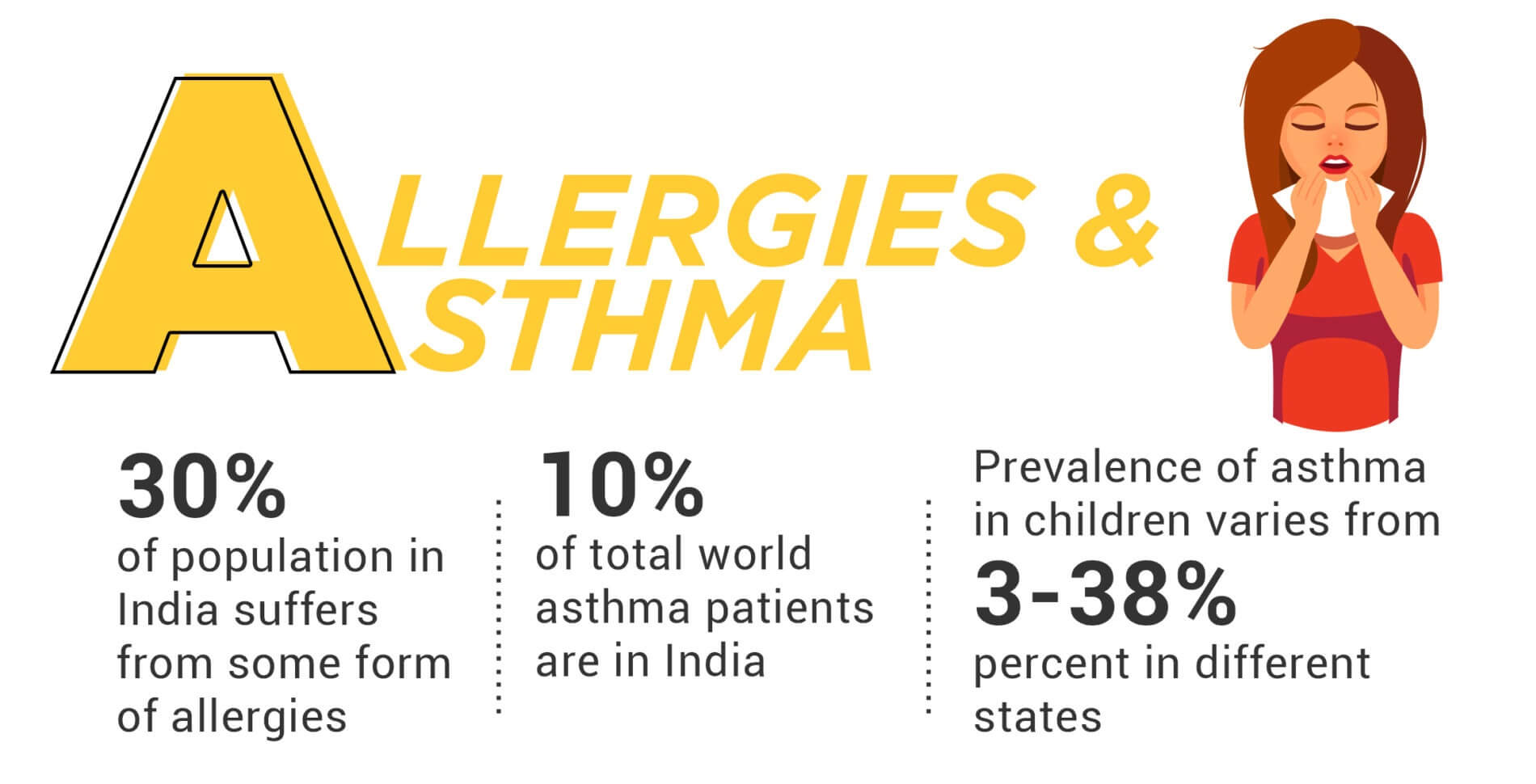- Swastik Clinic, Ahmedabad, GJ, IND
- Call: 8849867169 (For Appointment)
- Mon - Sat: 10 AM - 08 PM
- Sun: Only Emergencies
Asthma & Allergy – Is There Any Connection?

Asthma & Allergy – Is There Any Connection?
Asthma and allergy are the two most common chronic diseases in our country. Asthma is a respiratory condition that causes the airway to narrow and makes breathing difficult.
One in every 10 asthma patients in the world is in India.
With an estimated 1.5-2 crore asthma patients, at least one in every 10 asthma patient globally lives in India. Globally, the economic costs associated with asthma exceed those of TB and HIV/AIDS combined.
With many people may not realize that there is a link between asthma and allergy, which can often occur together.
90 per cent of childhood asthma and 50 per cent of adult asthma is caused due to environmental allergens.
If you or your loved one experience either condition, this is indeed a great information for you to understand how they are related. Doing so will help you limit your exposure to triggers and treat your symptoms.

SYMPTOMS OF ASTHMA AND ALLERGIES
Both conditions can cause respiratory symptoms, such as coughing and airway congestion. However there are some unique symptoms also to each disease. People with asthma more often experience:
- chest tightness
- wheezing
- breathlessness
- coughing at night or in the early morning
Allergies may cause:
- watery and itchy eyes
- sneezing
- runny nose
- scratchy throat
- rashes and hives
ALLERGY-INDUCED ASTHMA
Many people experience one condition without the other, but allergies can either worsen asthma or trigger it. When these conditions being so closely related, it’s known as allergy-induced, or allergic, asthma.
Many of the substances that trigger allergies can also affect people with asthma. Dust, cockroaches and pollens are the biggest causes of allergic asthma, according to analysis of reports of five years, collected by a diagnostic centre in India.
Further, family history affects a person’s chances of developing allergies or asthma. If one or both parents have allergies, it’s much more likely that their children will have allergies. Having allergies such as hay fever increases your risk of developing asthma.
TREATMENTS TO HELP ALLERGIES AND ASTHMA
Most treatments target either asthma or allergies. Some methods specifically treat symptoms related to allergic asthma.
Montelukast (Singulair) – medication primarily prescribed for asthma to help with both allergy and asthma symptoms.
Allergy shots (also known as immunotherapy) – introducing small amount of the allergen into the body, allowing your immune system to build up the tolerance.
Anti-immunoglobulin E (IgE) – an immunotherapy that targets the chemical signals that cause the allergic reaction in the first place.
Inhalation Therapy – in which the inhalation route is frequently used to administer drugs for the management of respiratory diseases such as asthma or chronic obstructive pulmonary disease.
Pulmonary Function Testing (PFTS) like Spirometry is also carried out at initial diagnosis of asthma.
ENDING NOTE…
It is important to understand that there is a strong connection between asthma and allergies. The best defense against allergies and asthma is to pay attention to your own triggers, as they can change over time.
By being informed, consulting with a nearby pulmonologist, and taking steps to limit the exposure, even people with both asthma and allergies can help effectively make both conditions manageable.
Recent Posts
Archives
- April 2022
- January 2022
- December 2021
- November 2021
- August 2021
- July 2021
- June 2021
- May 2021
- April 2021
- March 2021
- February 2021
- January 2021
- December 2020
- November 2020
- October 2020
- September 2020
- August 2020
- July 2020
- June 2020
- May 2020
- April 2020
- March 2020
- February 2020
- January 2020
- December 2019
- November 2019
- October 2019
- September 2019
- August 2019
- July 2019
Categories
Recent Posts


I Got Covid-19 & Have Asthma – What Now?
09th Jan 2022
